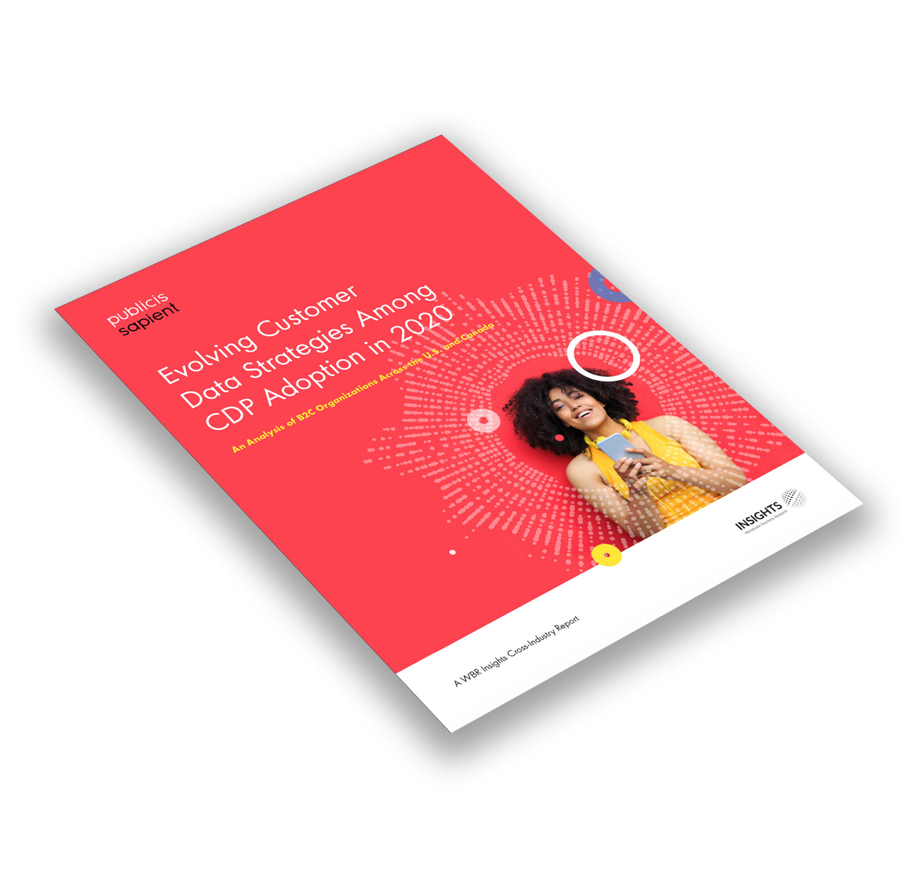What issue can we solve for you?
Type in your prompt above or try one of these suggestions
Suggested Prompt



Research
Data Privacy Leads Companies to Customer Data Platform Adoption
Data Privacy Leads Companies to Customer Data Platform Adoption
New privacy and compliance regulations are driving companies to plug in to customer data platforms, according to research from Publicis Sapient and WBR Insights.
Executive Summary
The report surveys 100 leaders from positions at director level and above on how they’re using Customer Data Platforms (CDPs) to better understand their customers. Respondents are from business to consumer (B2C) companies in the United States and Canada from nine industries including financial services, retail and travel and hospitality. Research also focused on how companies are using CDPs for long-term strategies and what areas of their platforms they’re working to improve.
Some 64 percent of respondents said their company has some form of a CDP, which draws consumer insights from multiple data sources, and 56 percent of respondents who have a CDP said they consider their platform a success. When asked why they are considering adopting a CDP, “optimizing data privacy and compliance” was the most common choice, followed by “improving the customer experience including loyalty and personalization.”
“Companies are becoming more mindful of how customers perceive how they use their data, in addition to making sure they're staying compliant and using a CDP to do so,” said Chris Rand, digital content and research manager at WBR Insights. “Traditionally, companies will use data for things like email marketing campaigns, but many companies are looking for more opportunities to power the customer’s entire experience. They use data to do this and thereby understand their lifetime value to the business.”
Key Findings
- Companies are focused on earning trust: Along with data privacy and compliance as a top reason for adopting a CDP, 51 percent of respondents said they’re making a concerted effort to improve transparency with customers — the second highest ranked priority being gaining a better understanding of customers. More than one-third of respondents also said privacy was one of the data management and execution initiatives they will undertake in 2020.
- CDPs are used to drive loyalty: Improving customer loyalty is another priority among respondents. Concerns for data privacy and improving transparency are connected to improving loyalty. The more customers understand what personal data is being collected and how it’s being used, the more encouraged they are to continue doing business with a brand. A recent Ipsos survey found 67 percent of consumers would be comfortable sharing data if they knew how companies would use it. Respondents to our survey also indicated that they’re using CDPs to improve personalization, although 23 percent also said they need to improve how data is accessed across the organization. Personalization efforts are most successful when every team who needs to access data to learn more about customers is able to easily do so.
- CDPs are being used to mitigate risk: Risk management, risk modeling and churn are among the top initiatives companies are looking for CDPs to improve in 2020. De-risking is connected to being able to make real-time changes using accurate analytics. With major cyberattacks and data breaches making headlines in recent years, many companies want to ensure they can protect customer data and govern how it’s stored throughout their technology stack.
CDPs in the COVID-19 Era
More U.S. customers are shopping online due to the COVID-19 pandemic, with U.S. retailers’ online revenues growth up 68 percent year-over-year as of mid-April. In many cases, they’re leaving behind valuable information about their behavior and preferences. While the survey was conducted before the pandemic began, it’s encouraging to see a high percentage of respondents focused on improving transparency and customer loyalty as customers look to brands they can rely on during uncertain times.
Our findings also show that respondents without CDPs are having less success than those who have adopted one, with 45 percent of respondents that said they don’t have a CDP also stating that their customer data tools are “in need of improvement.” CDPs can grow and retain customer relationships when a lot of brands will have strong data programs competing for customers’ attention online. With many customers unable to meet businesses face-to-face during the pandemic, those businesses able to digitally meet their customer are pulling away from the competition.

How Do You Stack Up? Get the Complete Results & Analysis.
See what 100+ executives across industries shared with WBR and Publicis Sapient about their Customer Data Platforms.




